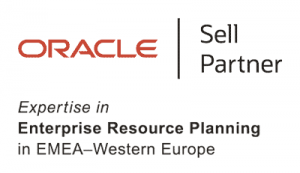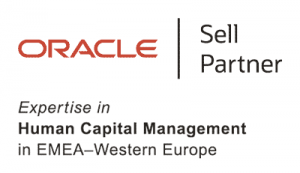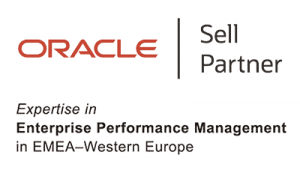Published on October 9, 2019
Market Dynamics – The Secrets of the Crystal Ball & Finding the Gap
My insatiable curiosity for watching market forces is an addiction I have never been able to fully reconcile. For myself my market of choice has always been Information Technology. An interest fostered by my father, who was by his own admission a fledgling IT Director in the late 70’s early 80’s, alongside a teenage hobby fuelled by my home computer (my weapon of choice being the “BBC Micro Model B 32K” because I couldn’t afford an Apple II) and a fledging schoolboy entrepreneurial venture writing “O” level projects for £25 a pop which subsequently led to a professional career spanning over 32 years and counting, comprising many ups and downs.
Over time I have watched my industry change beyond all recognition. More specifically watching the Software Vendors and the Systems Integrators landscape both globally and locally (UK) is something I have always found fascinating. It will always be of great pride and a high degree of satisfaction that in my own small way I was able to put all my knowledge, learning and experience into practice and contribute by founding a niche player which took advantage of a gap in the market and subsequently sold it, with my business partner, to a much bigger fish in the sea.
Understanding market dynamics and the supply and demand equation is just one continuous learning experience. On one-side is the demand which requires you to have insight into customers business operations to comprehend the challenges and drivers that comprise the market forces that are in play. Balancing the equation is the supply side comprising the “players” – the service providers that come in all shapes and sizes with their different value propositions and all trying to differentiate themselves from one another (well the smart ones are at least!).
As technology innovation continues to accelerate and knowing that the technology of today and tomorrow is truly transformational my endless curiosity has always been three-fold. Firstly, if consumer organisations can really take advantage of technology innovation and adapt to new ways of working or will they become another tombstone in the graveyard. Secondly, if the existing players in the market can actually change their service offerings and underlying operating models to serve the consumer’s needs not only of today but more importantly of tomorrow. Finally, and for me the most interesting, is whether new market opportunity attracts new entrants with new go-to-market strategies and product/service propositions.
To have a successful business, of any size, from the corner newspaper shop through to the likes of the very large global Systems Integrators, one thing they both have in common is that need to provide products and/or services that are relevant to a market of consumers who are willing to buy through delivery channels that can service the markets efficiently. If you become no longer relevant to your market you will simply, over time, go out of business. Consequently, understanding the market and the buyer’s needs is absolutely critical, especially when market forces and external events are constantly changing. The sand is quite simply moving underneath your feet and remember no one is ever too big to fail, and that in itself is a business opportunity.
Finding the Gap
Now the exciting part is spotting the market opportunity or in layman’s terms the “gap”. This either comes about when either the needs of the consumer are not being met by the existing players or when an advancement, usually but not always, in technology creates a new business model and new ways of working and a new need materialises upsetting the status quo and the natural order of things. This is market disruption.
Consequently, the market changes and metaphorically the planets come out of alignment in regard to supply and demand. Being able to spot this and react quickly is the trick as this can happen almost overnight. Even better if you can predict it in advance and position yourself accordingly as this is where you make the real money. Success in business is always about timing and having the cash to fund the venture.
Now I could go on at this point quoting much more advanced economic theory, however everything in my opinion comes down to basic market analysis of factors (Social, Economic, Political, Technology, Environment, Legal) and the basics of supply and demand. Then throw in some outcome scenario planning (cause and effect) and gamification theory and you end up with a comprehensive model you can apply. Research is necessarily, but it is important to remember that markets are in a constant state of flux and “windows” of opportunity appear and close. Richard Branson once said that his top team make investment decisions within a six-week window, after that, they believe that they probably have missed the boat.
What’s the Magic Formula?
For me it’s simply this. Markets are cyclical in nature and therefore to a degree predictable. Combine this with what you know about the supply side and again the predictable nature of incumbent players and the formula becomes complete. History really does have a habit of repeating itself.
Ones focus should always be on the market, the consumer, and not in the first instance the companies that service that industry. They are obviously very important pieces on the Chess Board, but the market – the consumer need, overrides everything so this is where the focus needs to be. To para-phase “don’t take your eye off the prize and get distracted by what others are or are not doing”.
What have I have Learned?
Now I am not going to go into detail as to how Certus Solutions cracked Central Government with Oracle Cloud here (that’s coming in my book – first shameless plug), albeit in my eyes it is the ultimate case study. But I can assure you it was not down to luck. Luck is a fool’s game, and every entrepreneur knows you create your own luck through vision, focus and a lot of bloody hard work. Several factors were involved and just like when we sold the company it was a case of all the planets aligning and the predictability of the market.
Once you can see this alignment, that’s the sweet spot. But also remember, planets only align for a point in time they then come out of alignment and the opportunity doesn’t materialise again (if at all) until the next cycle. The things I have learned and I pass on here to those that are interested…
1. Know Your Market, Know Your Customer, Know Your Competition – Articulate the target market segment carefully, understanding all the elements that comprise the market, especially both sides of the supply and demand equation. If the market is the Chess Board, do you know and have a perspective on all the pieces?
2. Tailor Your Proposition – Differentiation is Critical to Success – Naturally to be successful you need a killer proposition and it needs to be different from everyone else. This needs to be highly focused and targeted at the gap you have identified. Don’t be generic and chase what appears to be the latest trend it will be “fish and chip” paper next week, and the market won’t understand what you stand for and what you are all about. Remember the focus should always be on the customer problem you are trying to solve and not the technology you are using. Also, part of any proposition I honestly believe is “brand” development its key in regard to differentiation – but that’s for another day
3. Markets can be Influenced – You can never ever control the market, however for periods of time you can heavily influence it and in doing so drive consumers towards you and if you can create the “me to” effect so much the better. Ultimately the market will decide its own direction and course
4. Don’t Get Caught Up in the R&D Hype – Markets are constantly changing, the speed of technology innovation always outpaces supplier’s capability to deliver it let alone consumer organisations ability to deploy it effectively that it creates business value. Some technologies are “fads” and come and go in a blink of an eyelid. Why? put simply they have no relevance to delivering a solution to a problem, the technology and its use is just immature, or the market is just not ready for the innovation. Example – around 2000-2001 the IT industry started talking about “Application Service Providers”, where Service Providers would host the application and lower a consumers Total Cost of Ownership as they would not need a data centre. The initiative never took off and no one wanted to buy. Hang on – doesn’t this sound like Cloud and Software and a Service, a generation later??
5. First Time Mover Advantages – As per one of my favourite quotes from the film “Margin Call”, “Be first, be smarter or cheat, and as I don’t cheat it’s a dam site easier just to be first”. Being first is easier because in being first you can define the market to suit you, not the other way around. Now for those naysayers I know you don’t have to use first time advantage as the only winning formula, i.e. Google were the 14th available search engine when it launched and look what happened to them! I am also not saying you can’t enter what appears to be an established market, as you can it is just harder but you can redefine an existing market by providing a solution for a new consumer need. Classic example was the Systems Integrator market for on-premise Oracle systems in the UK, the technology shifted, and the market became all about the Cloud; Certus Solutions entered an established market and became the first Oracle partner in the UK to be specialised in Oracle Cloud and disrupted the existing players and filled the gap. We then let everyone else play catch-up, whilst we set the narrative and banged the drum
6. Control the Narrative – Controlling the story and the message to the market is totally in your power. If your first, you get to do this easier than when the competition arrives, and they will arrive be certain of that. However messaging needs to be local and personal. Too generic, corporate like and wide-ranging means absolutely nothing to nobody. The narrative is driving a call to action. What is the problem you are trying to solve? How are you going to solve it? and in solving it what is the value you are delivering? Don’t sit on the fence, you have a point of view, so amplify it. Remember if you are not controlling the narrative and the story someone else will be!
7. You Can Create Barriers to Entry – Set the barrier to entry as high as you possibly can, this gives you time before other entrants enter the market or the existing suppliers change tact. In-fact the more barriers to entry you can create, the better it is for you to establish yourself. The beauty about being first is that everyone else is immediately playing catchup. Examples of barriers to entry I have used include Brand, Talent, Customer Advocacy (very powerful), Commercial Proposition and Intellectual Property. When you combine them all into a winning value proposition you can really make your presence felt in the market, especially if you can scare the competition into not even competing with you. Perception is reality regardless of size
8. Markets Behaviour can to a degree be Predicted – Gamification and outcome scenario planning are the most useful tools and of course a Crystal Ball with a glass of Red wine usually helps. Plot the cycles of the local economy, the behaviour of your consumers and naturally the competition, over time and look for the patterns, it is this that often shows up where the gaps are. Predictability of both consumers and suppliers behaviour is a powerful ally
9. Trust Your Gut – Finally, and most importantly always “trust your gut” – you can do all the research you want, but as they say if “something looks like a duck, swims like a duck, quacks like a duck then it is a duck”. Don’t kid yourself and read things into the data that aren’t actually there just because you want to
10. Execution is Everything – Even if you can see the gap, if you cannot execute then it all becomes nothing. You need to live and breathe business strategy. Anyone can put a set of power point slides together but few in my experience can really execute
Lessons Applied in Practice – Predicting Market Behaviour
Scenario planning – now I am a big fan of this technique and it’s just like Chess. Can you plot out your customers and the competitions five moves ahead? There are numerous combinations, but just like a Chess board as the game develops and the pieces move around so does the market. This simple technique of playing “What if?” with a small team to generate ideas can give you tremendous insight very quickly on not only what could happen but more importantly as to how your going to play the game.
Again, look for the cycles and patterns over time. Don’t worry about what your competition are doing but play the game your way. Execute your strategy, and if it doesn’t work change it. This is totally in your control. Reacting to everyone else in a knee jerk manner is not a strategy as all you are doing is playing someone else’s game. It’s at this point you subconsciously begin to chase the market and this is always a losing position.
So in summary I have probably dismissed 100 years of more complex economic models, discussion and theory by those who are a way lot smarter than me but what I have provided is the way I approach it and knowing what works for me. However, I do hope the above provides some insight into how to spot opportunity and position yourself accordingly. Alternatively, if you just believe in luck just buy a lottery ticket and see if the numbers drop. PS mine are 1, 7, 8, 22, 42 and lucky stars 1, 7.
Disclaimer: This is a personal blog. The opinions expressed here represent my own and not those of my employer. In addition, my thoughts and opinions change from time to time and I consider this a necessary consequence of having an open mind. This blog is intended to provide a semi-permanent point in time and as such any thoughts or opinions expressed within out of date posts may not be the same or similar to those that I hold today.
















